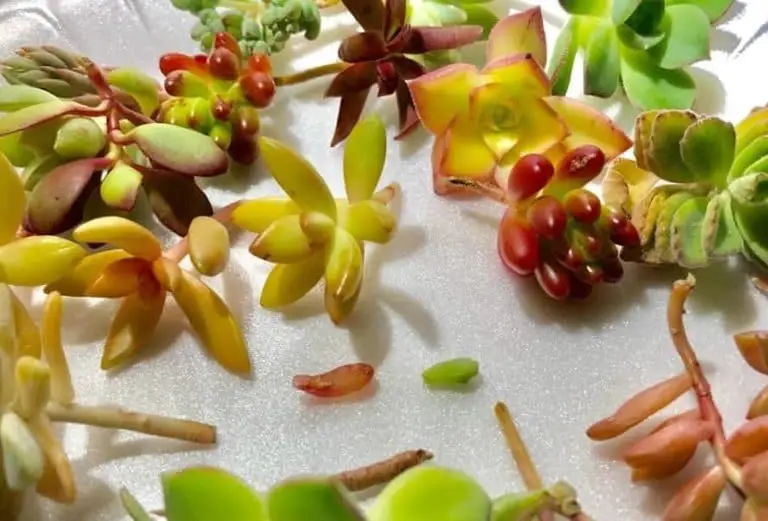Sedum is one of the easiest succulents to propagate, making it a favorite for beginners and seasoned plant lovers alike. Whether you’re working with a trailing variety or an upright garden type, these tough little plants multiply readily from leaves, cuttings, and divisions.
The methods in this guide apply to all types of sedum, from popular indoor trailing succulents like Sedum morganianum (Burro’s Tail) to hardy outdoor varieties like Sedum spectabile (Autumn Joy).
Let’s walk through everything you need to know to create new sedum plants from the ones you already have.
Table of Contents
- When to Propagate Sedum
- Method 1: Stem Cuttings (Great for Trailing and Upright Varieties)
- Method 2: Leaf Cuttings (Perfect for Smaller-Leaved Sedums)
- Method 3: Water Propagation for Trailing Sedums
- Method 4: Division (Best for Outdoor Clumps and Spreading Types)
- Outdoor Sedum Propagation
- Popular Sedum Varieties to Propagate
- Final Thoughts
When to Propagate Sedum
Spring through early summer is the best time to propagate sedum, especially if you’re working outdoors or want faster root development.
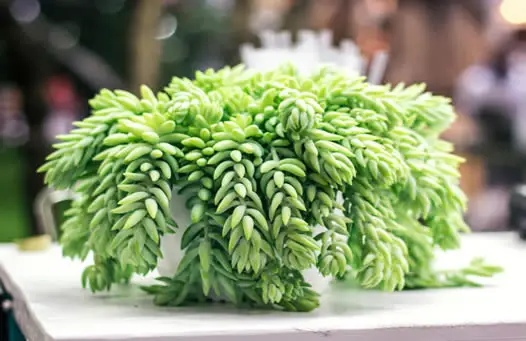
The warm temperatures and active growth season help cuttings and leaves establish more quickly.
That said, many sedums can be successfully propagated year-round indoors if kept in warm, bright conditions.
Method 1: Stem Cuttings (Great for Trailing and Upright Varieties)
Stem cuttings are one of the easiest and most effective ways to propagate sedum.
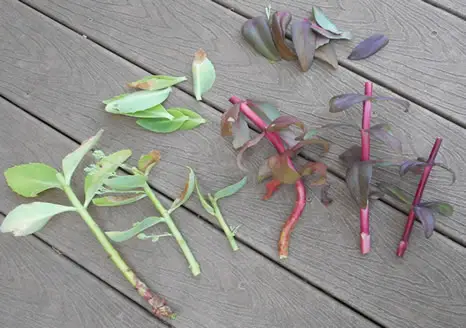
-
Choose a healthy stem about 3 to 6 inches long with several sets of leaves.
-
Use clean, sharp scissors or pruners to snip the stem.
-
Remove the bottom two sets of leaves to expose the nodes.
-
Let the cutting dry and callous over for 1–2 days.
-
Plant it in dry, well-draining succulent soil.
-
Water lightly after a few days, then wait until the soil dries before watering again.
Within a few weeks, roots will begin to form and new growth will appear at the tips.
Method 2: Leaf Cuttings (Perfect for Smaller-Leaved Sedums)
Some low-growing and compact sedums propagate well from leaves.
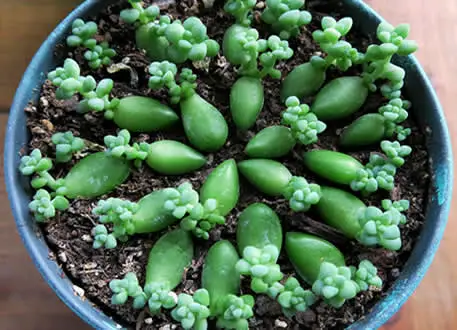
-
Gently twist a healthy leaf off the main stem, making sure the entire leaf is intact.
-
Let it sit for 1–2 days in a dry, shaded area to callous over.
-
Lay the leaf on top of moist succulent soil—no need to bury it.
-
Mist the soil lightly every few days to keep it barely moist.
-
Roots and tiny plants will form at the base of the leaf within a few weeks.
Once the new plant is established, you can stop misting and water like a mature succulent.
Method 3: Water Propagation for Trailing Sedums
Some trailing sedum varieties—especially Sedum morganianum (Burro’s Tail) and Sedum burrito—can also be propagated successfully in water.

While not as common as soil propagation, this method is a fun and visible way to watch roots develop.
-
Take a healthy stem cutting that’s at least 3 to 5 inches long.
-
Remove the bottom leaves so that a clean section of stem is exposed.
-
Place the cutting in a glass of water, making sure no leaves are submerged—just the bare stem.
-
Set the glass in a warm, bright location with indirect light.
-
Change the water every few days to keep it fresh and prevent rot.
Bonus Tip: Add a few drops of a gentle liquid succulent fertilizer (look for an NPK around 10-10-10 like this one) diluted to one-tenth strength.
This gives your cutting a nutritional nudge as roots begin to form.
Once the roots reach about 1 to 2 inches long, transplant the cutting into succulent soil and water lightly.
The plant will adjust to soil quickly and begin putting out new growth.
Note: Water propagation is best suited for trailing sedums. Upright and groundcover types—such as Autumn Joy, Matrona, Angelina, and Lemon Ball—should be propagated in soil or through division, as they tend to rot in water.
Method 4: Division (Best for Outdoor Clumps and Spreading Types)
If you have a well-established sedum in a pot or garden bed, you can divide it to create new plants instantly.
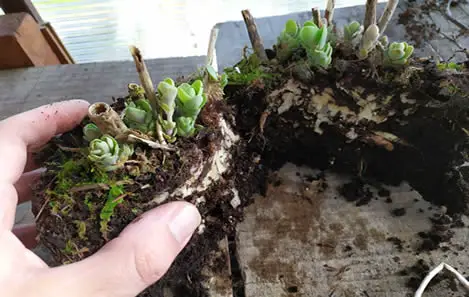
-
Remove the plant from the soil or container.
-
Gently pull apart or cut the root ball into sections, ensuring each division has roots and stems.
-
Replant each section in fresh soil with good drainage.
-
Water lightly and let the divisions settle in a bright, warm location.
This method is especially useful for larger, clumping varieties like Sedum ‘Autumn Joy’ or Sedum matrona.
Outdoor Sedum Propagation
Most hardy garden sedums can be propagated directly outdoors, especially ground covers and upright types.
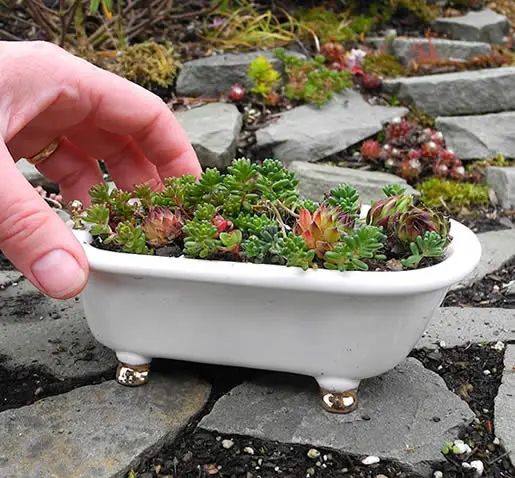
In spring or early summer:
-
Snip or pinch healthy stems and press them lightly into loose, well-draining soil.
-
For leaf propagation, simply scatter a few leaves across a dry bed of soil or rock garden.
-
Water sparingly at first, and let nature do the rest.
Sedums are incredibly resilient outdoors and often root with minimal effort.
Popular Sedum Varieties to Propagate
Here are just a few of the most popular sedums that respond beautifully to propagation:
Burro’s Tail (Sedum morganianum) – Trailing, blue-green leaves
Burrito (Sedum burrito) – Chubby, rounded version of Burro’s Tail
Autumn Joy (Sedum spectabile ‘Autumn Joy’) – Upright with pink blooms
Matrona (Sedum telephium ‘Matrona’) – Tall, purple-stemmed sedum
Angelina (Sedum rupestre ‘Angelina’) – Chartreuse trailing ground cover
Golden Moss (Sedum acre ‘Aureum’) – Fast-spreading mini ground cover
Lemon Coral (Sedum mexicanum ‘Lemon Coral’) – Neon green mounding sedum
Sedum adolphii (Golden Sedum) – Rosettes with golden-orange tips
Sedum treleasei – Thick blue-green foliage in compact clusters
Lemon Ball (Sedum reflexum ‘Lemon Ball’) – Spiky, lime-colored foliage
All of these propagate easily with one or more of the methods above.
Final Thoughts
Sedum is one of the most rewarding succulents to propagate.
With a few simple snips, twists, or divisions, you can create an endless supply of new plants for your home or garden.
Whether you’re expanding a collection, filling out a rock bed, or gifting cuttings to friends, sedum makes it simple, satisfying, and fun to multiply your plants with confidence.
Once you have some new plants growing you will want to ensure you provide them with the best care, so be sure to read our article Sedum Care: How to Grow and Enjoy These Hardy Succulents Indoors and Out.

